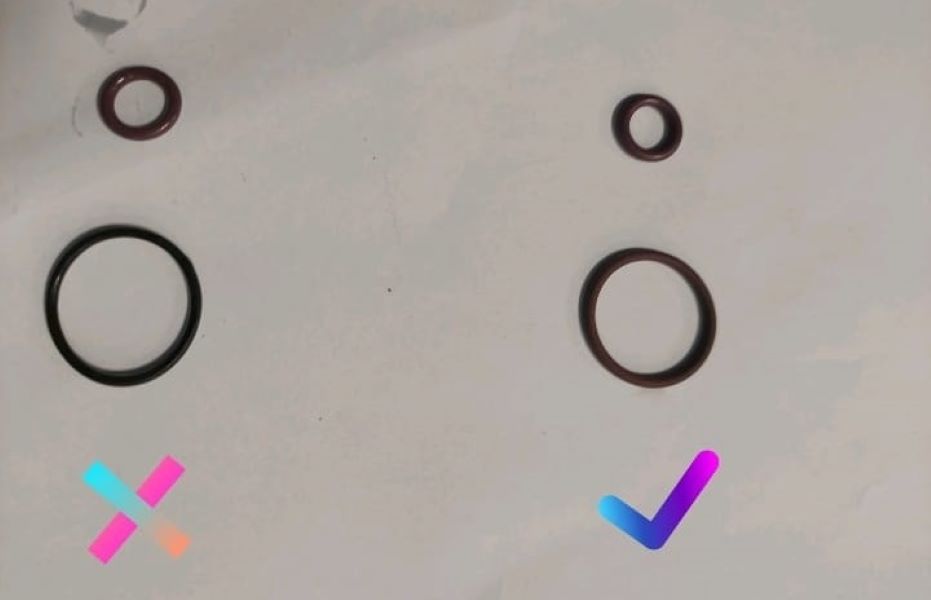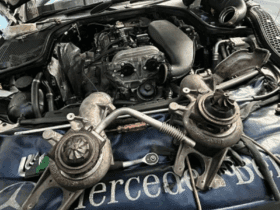Table of Contents
Air Con Not Blowing Cold Air in Car: Case Study with Mercedes-Benz S-Class W222
When the air con is not blowing cold air in a car, it can turn even a luxury driving experience into a frustrating one. This problem is especially noticeable in premium vehicles like the Mercedes-Benz S-Class W222, equipped with the M276 Engine. Owners expect flawless comfort, so when the AC fails, it’s important to follow a methodical diagnostic process rather than guesswork.
This article explores a real-world case study of a Mercedes-Benz S-Class W222 that arrived at the workshop with the complaint “Air Con Not Blowing Cold Air in Car.” We’ll walk through the step-by-step diagnostics, the root cause, the repair, and final resolution, while also sharing insights, preventative tips, and FAQs.
Vehicle Overview
- – Model: Mercedes-Benz S-Class W222
- – Engine: M276
- – System Type: Automatic climate control with integrated pressure sensors and electronic AC control unit
The W222 S-Class is a flagship luxury sedan, but like any sophisticated vehicle, its HVAC (Heating, Ventilation, and Air Conditioning) system can develop faults.
Customer Complaint: Air Con Not Blowing Cold Air
The owner reported that the air conditioning was not cooling. This is a common issue in vehicles and can stem from several causes, including:
- – Low refrigerant due to leaks
- – Faulty AC sensors or control unit faults
- – Worn seals or O-rings in the refrigerant circuit
- – Blocked or leaking AC lines
Confirming and resolving this issue required a systematic investigation.

Step-by-Step Diagnostic Process
1. Complaint Confirmation
- – Action: Tested AC performance in the workshop.
- – Finding: Air from vents was not adequately cooled.
- – Result: Confirmed the customer’s concern.
2. Short Test and Fault Detection
- – Action: Performed a diagnostic scan of the AC control unit.
- – Finding: Fault stored indicating low refrigerant level.
- – Result: Pointed toward a refrigerant leak.
3. Comprehensive System Check
- – Action: Inspected AC components visually.
- – Finding: Found oil residue on the low-pressure line a common indicator of refrigerant leakage.
- – Result: Leak suspected in seals or connections.

4. Recovery of AC Gas
- – Action: Attempted refrigerant recovery.
- – Finding: No refrigerant was present in the system.
- – Result: Confirmed a significant leak.

5. Repair – O-Ring Replacement
- – Action: Removed and replaced two O-rings on high-pressure lines leading to the compressor.
- – Reason: O-rings are frequent failure points, and oil traces supported this diagnosis.


6. Pressurization & Leak Testing
- – Action: Pressurized system with nitrogen at 15 bar.
- – Finding: Held pressure overnight without leaks.
- – Result: Confirmed the system was now sealed.

7. System Recharge
- – Action: Refilled refrigerant to factory specifications.
- – Importance: Correct refrigerant charge ensures cooling efficiency and compressor protection.
8. Final System Validation
- – Action: Checked actual values in the AC control unit.
- – Finding: All parameters (pressure, temperature sensors) were within specification.
- – Result: The AC system delivered cold air consistently.

Root Cause
The root cause of the Air Con Not Blowing Cold Air complaint was a refrigerant leak at faulty O-rings. The failed seals allowed the system to lose all refrigerant, which prevented cooling.
Explore More Mercedes AC and Climate Control Issues
For a deeper dive into all AC-related issues, visit our hub page: Mercedes AC and Climate Control Problems – Complete Troubleshooting Guide. You’ll find grouped case studies, step-by-step diagnostics, and prevention tips.
Quick Reference Table – Diagnostic Summary
| Step | Action Taken | Finding | Result |
|---|---|---|---|
| Customer confirmation | Tested AC system | No cold air output | Complaint validated |
| Short test | Diagnostic scan | Low refrigerant level fault | Leak suspected |
| Visual inspection | Checked AC lines | Oil leak at low-pressure line | Likely O-ring failure |
| Gas recovery | Attempted refrigerant recovery | No gas present | Confirmed leak |
| Repair | Replaced two O-rings | Known failure points | Leak source fixed |
| Leak test | Nitrogen pressurization | No drop in pressure | Repair confirmed |
| Recharge | Added refrigerant gas | Correct charge level | AC functional |
| Final validation | System test | All values within spec | Issue resolved |
Repair and Resolution
The replacement of faulty O-rings and proper recharging of the AC system restored full cooling performance.
- – Leak-free operation confirmed through extended testing.
- – Customer’s complaint was resolved.
- – AC system now performs at factory efficiency.
Key Takeaways for Drivers
If you face the issue of air con not blowing cold air in your car, consider these steps:
- – Always scan for fault codes many modern Mercedes models log low refrigerant warnings.
- – Look for oil traces near AC lines these often indicate a leak.
- – Check refrigerant levels zero refrigerant means a leak must be repaired, not just refilled.
- – Replace seals and O-rings with genuine Mercedes parts for reliability.
- – Perform a nitrogen leak test before refilling refrigerant.
Preventative Tips for Mercedes AC Systems
| Preventive Task | Recommended Interval | Benefit |
|---|---|---|
| AC service (refrigerant + leak check) | Every 2 years | Prevents loss of cooling efficiency |
| Cabin filter replacement | Every 12 months | Keeps airflow smooth and reduces system strain |
| Visual inspection of AC lines | During routine service | Detects oil stains and leaks early |
| Run AC in winter | Weekly for 10 minutes | Keeps seals lubricated, prevents leaks |
FAQs – Air Con Not Blowing Cold Air
Q1. Why is my Mercedes air con not blowing cold air?
Most commonly due to low refrigerant from a leak or faulty AC sensors/components.
Q2. How do I know if my AC leak is from O-rings?
Look for oil stains near hose connections or compressor lines a telltale sign of seal failure.
Q3. Can I just recharge my Mercedes AC without fixing leaks?
No. The system will lose refrigerant again. Always repair leaks before recharging.
Q4. How much does it cost to repair a Mercedes AC refrigerant leak?
Depending on location, O-ring replacements cost $200–$600. Larger leaks (like evaporator replacements) can exceed $1,500.
Q5. Will my Mercedes AC system show a warning for low refrigerant?
Yes. Many models, including the S-Class W222, log a low refrigerant fault code in the AC control unit.
Conclusion
This Mercedes-Benz S-Class W222 case study demonstrates how a systematic diagnostic process resolved the complaint “Air Con Not Blowing Cold Air in Car.”
By confirming the complaint, scanning for faults, inspecting for leaks, replacing defective O-rings, performing a nitrogen test, and recharging the system, the problem was solved completely.
For Mercedes owners, the lesson is clear: when the air con stops blowing cold air, it’s not always the compressor or sensors sometimes it’s as simple (and hidden) as leaking seals. Regular AC servicing, seal inspections, and refrigerant checks can help avoid costly breakdowns and keep your ride cool.
Author
Written by: Mercedes Expert
Automotive Technical Trainer & Mercedes-Benz Diagnostic Specialist
With years of hands-on experience repairing and diagnosing Mercedes-Benz vehicles, specializes in case-study-based troubleshooting guides that blend workshop accuracy with educational clarity.
Last Updated: August 2025
— Salim, Mercedes Expert
Independent specialist in Mercedes-Benz diagnostics, CAN Bus analysis, troubleshooting case studies, and EV systems.







Leave a Reply